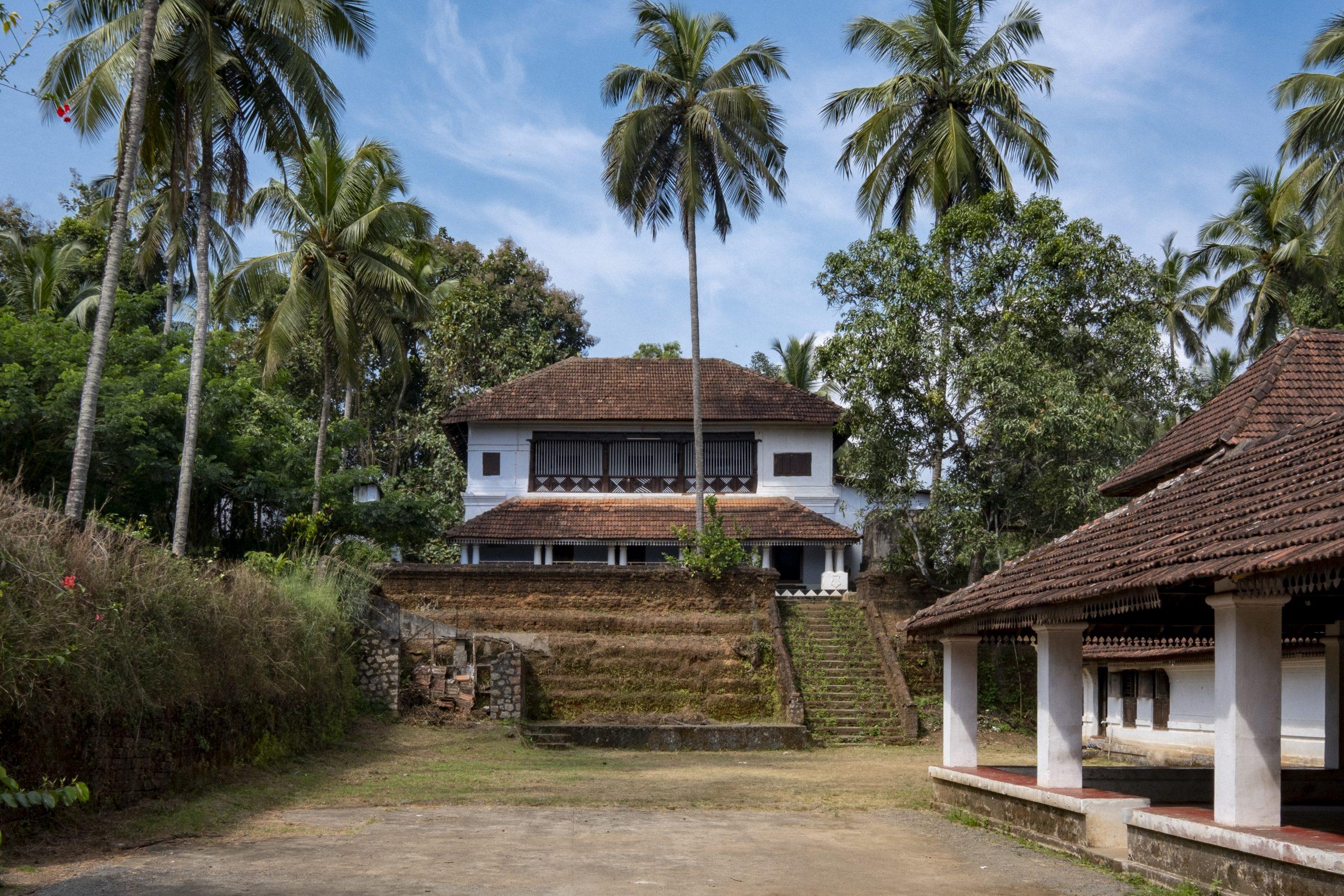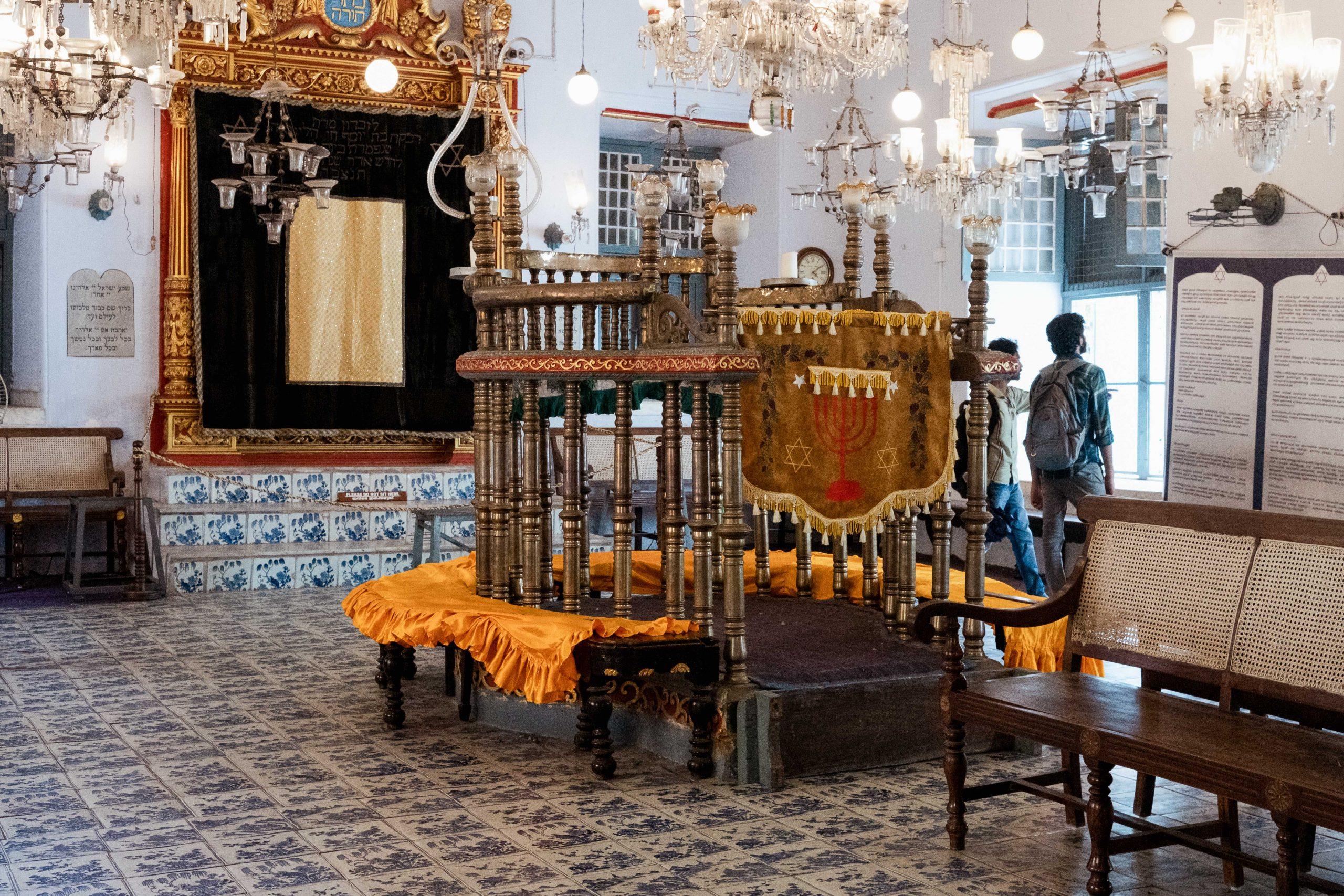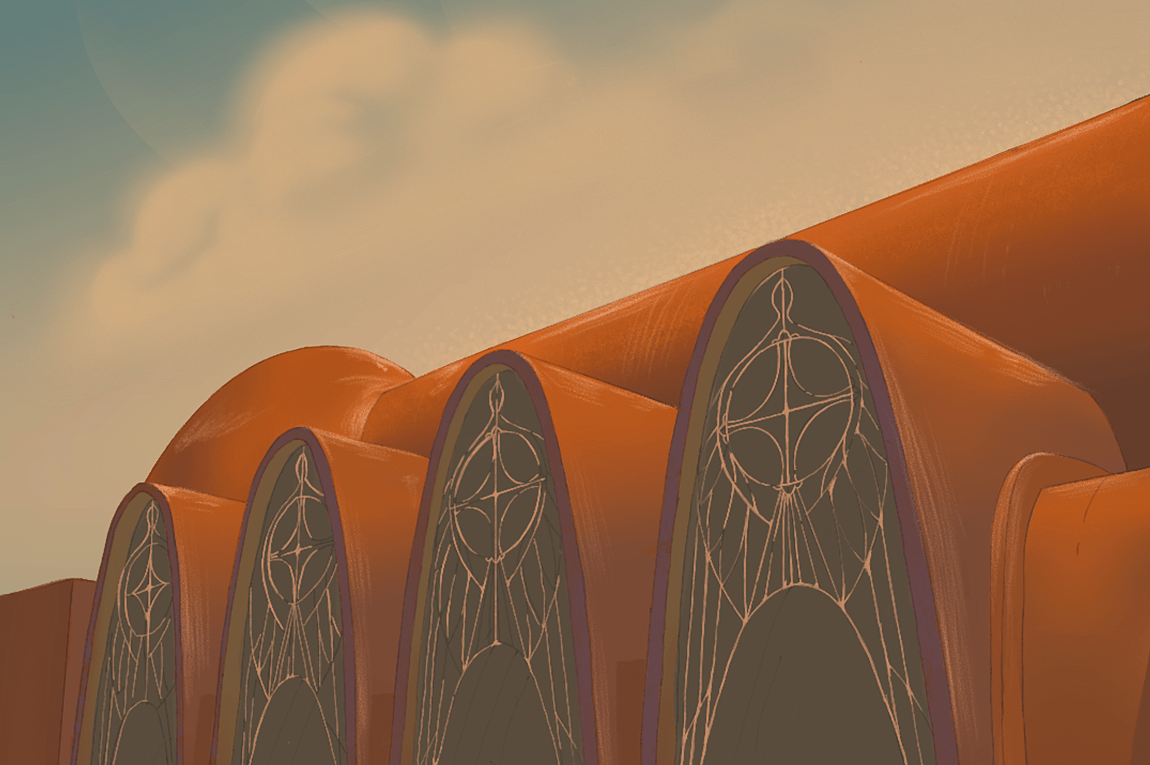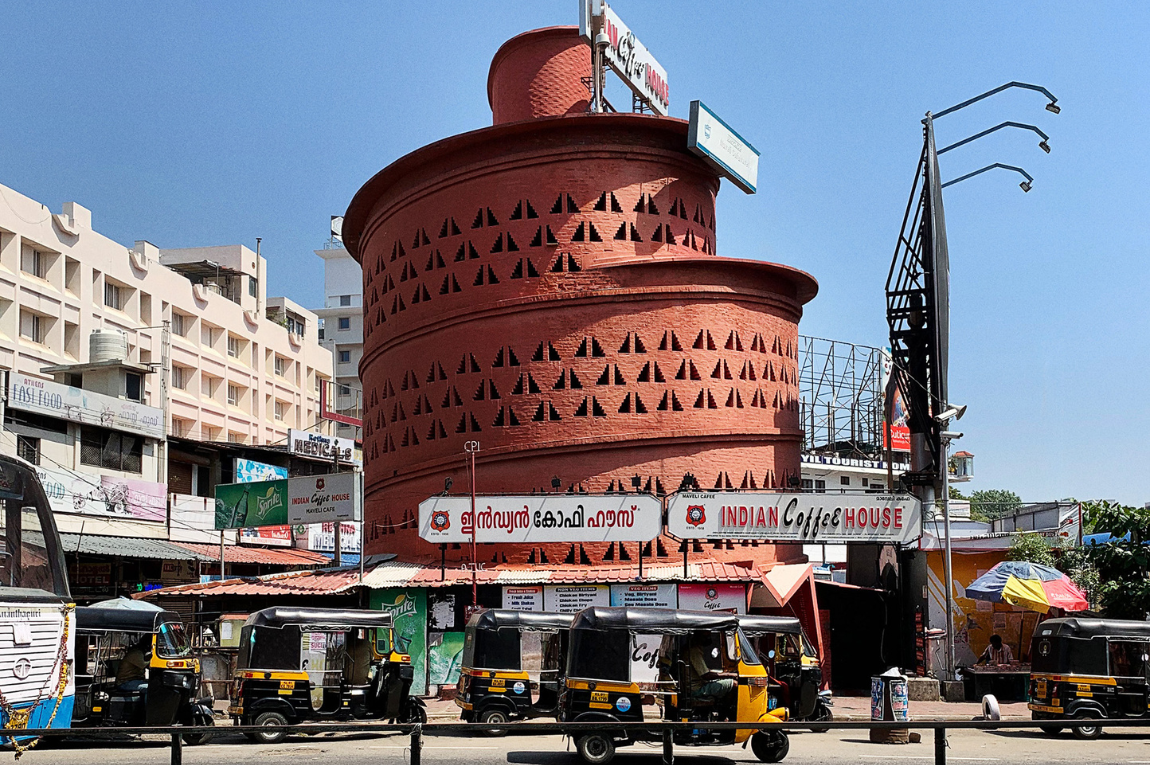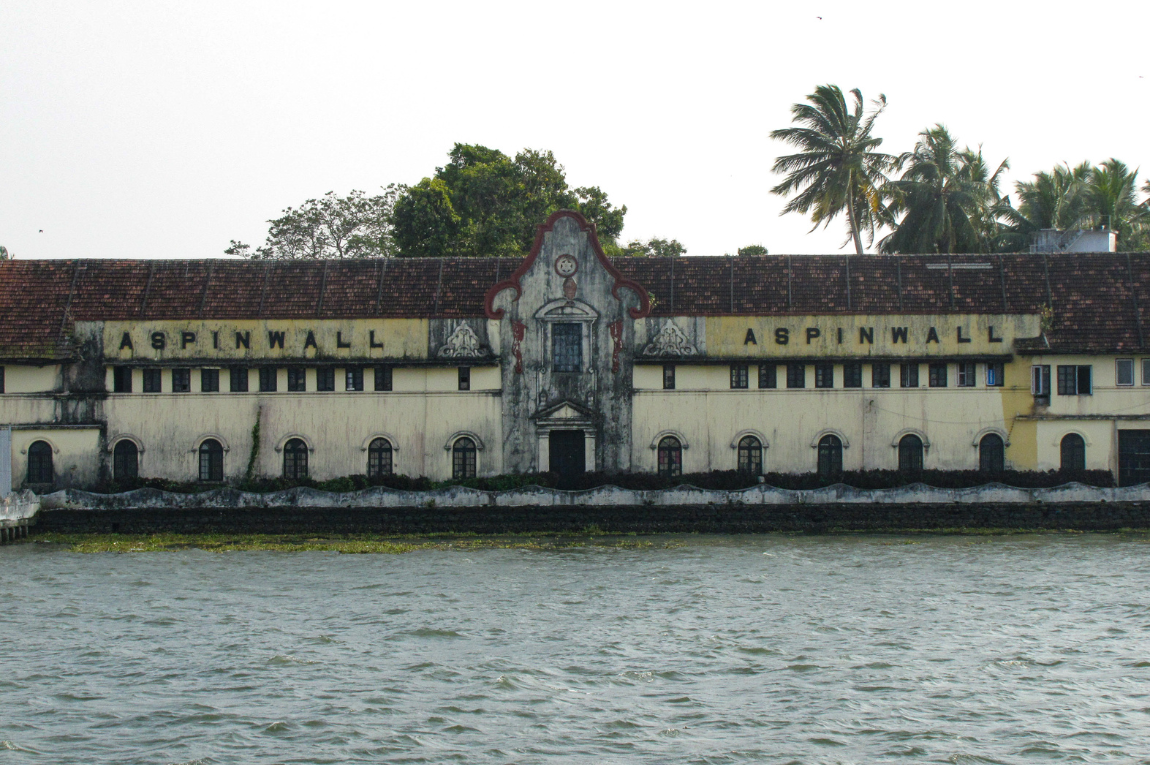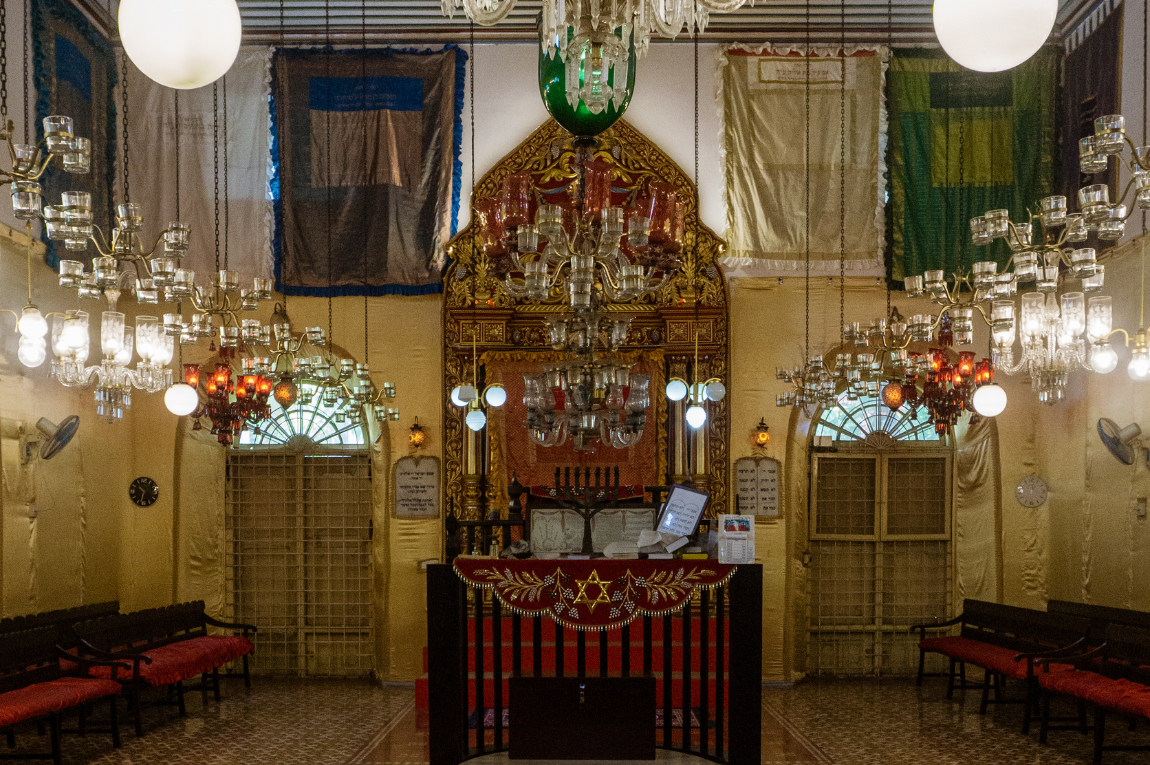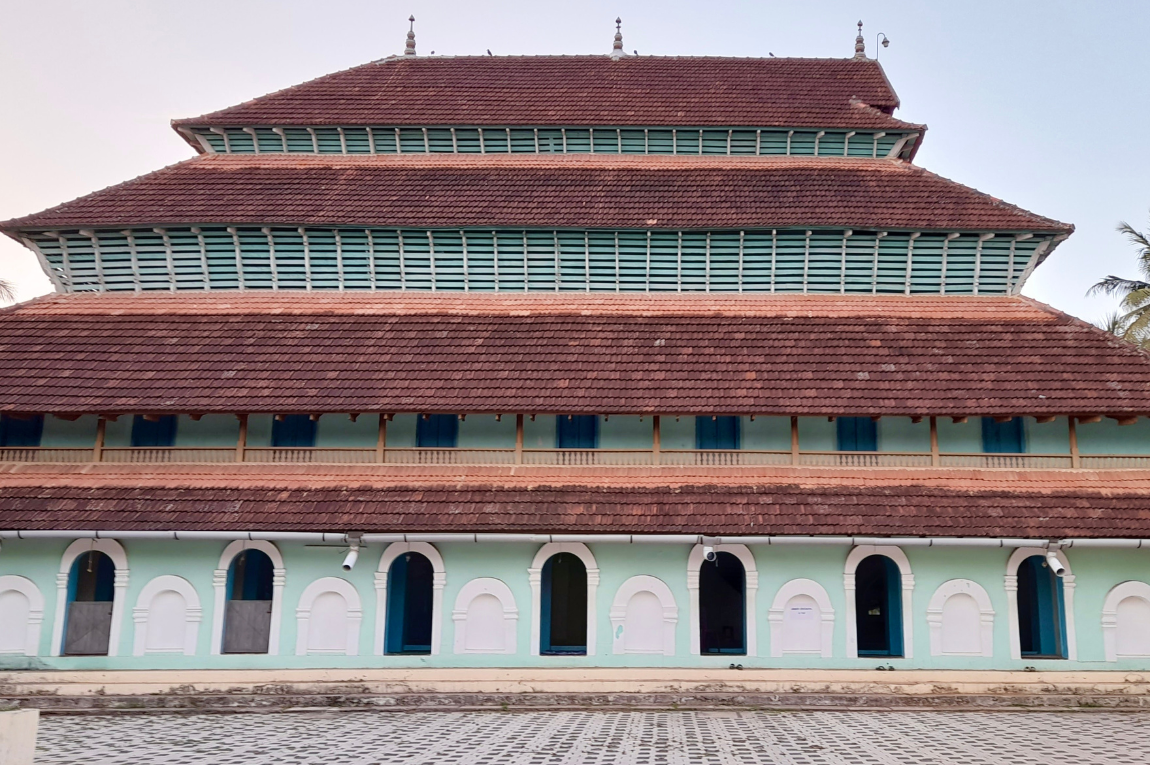Away from Kerala’s popular tourist trails, in the quiet village of Vellinezhi in Palakkad, stands the residence of the Olappamannas, a Namboothiri Brahmin (a Malayali Brahmin caste) family. The house, called Olappamanna Mana, built in the 18th century, silently narrates long-forgotten tales. Though I’m from Kerala, and reside in the nearby city of Thrissur, this Mana (home of a Namboothiri Brahmin) — a visual familiar from Malayalam films of the 90s, particularly the blockbuster Aaram Thamburan (1997) — still struck me as a revelation when I first visited it in October.
Stepping onto its grounds, I feel transported to another age where sustainability wasn’t a buzzword, but a way of life — where every corner was built from locally sourced materials. As my eyes drink in the top notes of vintage colours, Rajan, the caretaker of Olappamanna Mana, takes me around the premises while pointing out its various details. I spot the clay-coloured roof tiles on a wooden framework, weather-beaten to a sombre brown. The lime-plastered laterite stone walls covered with moss surround us. The red-oxide floors bear marks of the many who have walked on them, and the brown timber pillars echo the grandeur of bygone days.
The Olappamanna family deeply encouraged the arts, especially Kathakali — their home was the birthplace of Kalluvazhi Chitta, a form of Kathakali, which was taught at the Olappamanna Kaliyogam or dance school, situated within the house. In his book Olappamanna Mana (2016), Dr NP Vijayakrishnan notes that according to stories passed down from ancestors, the Mana was first a humble dwelling, which later expanded to the grand structure that stands today.
But a deeper look reveals how generations of the Namboothiri Brahmins, who regarded themselves as the keepers of Kerala’s Vedic traditions, infused their caste identity into their architectural designs. They built their manas in vast stretches, integrating temples and ponds (or bathing tanks) limited to their usage, with the entrance for family members separate from that for the staff who belonged to other castes. Their landlord status, which gave them powers over cultivators and the ability to store agriculture surplus, also ensured the presence of on-site granaries. Additionally, Rajan informs me of a designated room that was set aside for women — Dr Vijayakrishnan’s book clarifies that it was used by them during childbirth and menstruation.
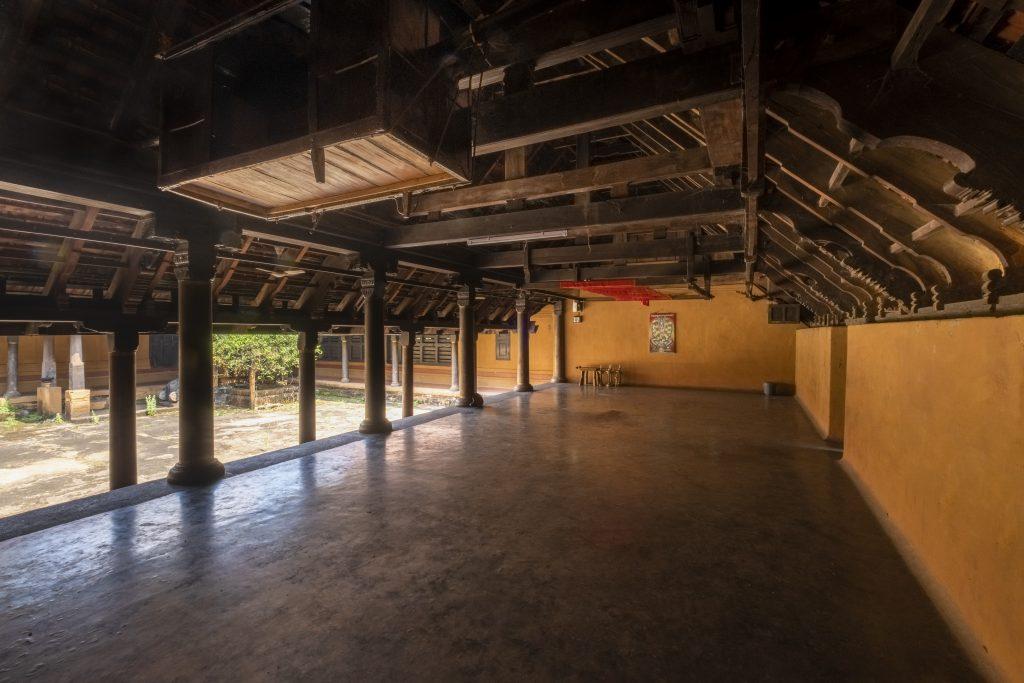
Earlier situated on a 20-acre stretch of land, the Mana remains a testament to the traditional architecture of Kerala and its eco-conscious design. The nalukettu layout, a central courtyard surrounded by four halls — vadakkini (north block), thekkini (south block), kizhakkini (east block), and padinjattini (west block) — facilitates ventilation. The Mana comprises two such nalukettu layouts — one each designated for men and women respectively — which form its ettukettu design of two courtyards and eight halls. The primary courtyard often served as a stage for art performances, a testament to the family’s profound appreciation for the arts. Elevated platforms around the nalukettu provided comfortable seating. Unlike other manas, the Olappamanna Mana stands distinct without a padippura, an entrance gateway.
Under the Land Reforms Act (1970), which was aimed at redistributing land in order to do away with land-ownership privileges of the dominant caste and those with feudal powers, the Olappamanna family lost part of their income, but the home stood resilient. Rajan tells me the Mana is now limited to five acres. Its survival owes much to its last residents and visionaries like OMC Narayan Namboodiripad, who challenged the caste norms by translating the Rigveda to Malayalam in Rigveda Bhasha Bhashyam (1982) and made the sacred text accessible to people of other castes. Following his death, his family members set up the OMC Narayanan Namboodiripad Deviprasadam Trust — with the help of profits from the sale of the translated texts — which now maintains the main premises of the Mana.
For cinephiles, the Olappamanna Mana evokes memories of the legendary actor Mohanlal in some of his career-best roles, like that of a Kathakali artist in Vanaprastham (1999). For art enthusiasts, it is the place that shaped Kathakali into its contemporary manifestation. For Vellinezhi villagers like Rajan, it’s a haven of cherished childhood memories. For me, it’s an enduring emblem of Kerala’s heritage.
Find your way to Olappamanna Mana in Palakkad, Kerala via Google Maps here.
Our selection of stays across India, best visited for their design and style. Check in
Sneha Thomas is a freelance journalist based in Kerala. She writes on sustainability, travel and lifestyle, and is on Instagram at @earths_tenant_sneha.
Sidharth KP is a photographer and filmmaker based in Kerala, who tries to convey the spirit of his hometown’s culture with authenticity. He is on Instagram at @sid_skp.
